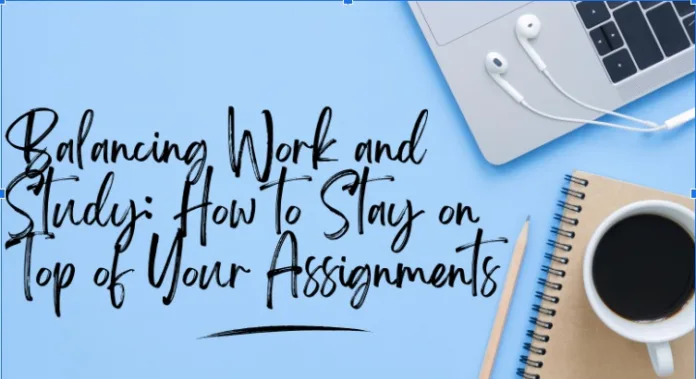Managing full-time or part-time work combined with their studies presents a difficulty for many students today. This double obligation can be too much and cause burnout and exhaustion. When juggling a busy schedule, you might look for an assignment service to help with your coursework or search online, wondering if this webpage will do my assignment for me or if another service can write my assignment as you explore different options for customized academic assistance.
Still, you can keep on top of tasks without sacrificing your sanity by using not-so-obvious techniques, professional guidance, and creative technologies. Here’s how.
Organize Your Tasks with the Eisenhower Matrix
Popularized by former U.S. President Dwight D. Eisenhower, the Eisenhower Matrix is a time-management tool with a workable answer. The matrix divides chores into four urgency and relevance categories:
- Urgent and Important
- Not Urgent but Important
- Urgent but Not Important
- Not Urgent and Not Important
Use an app like Todoist or Microsoft To-Do to design your own Eisenhower Matrix instead of just compiling a to-do list. Some applications even offer AI-generated recommendations on what to prioritize. Several now include tools that let you mark chores according to urgency and priority.
Utilize Microlearning Platforms
Microlearning can be revolutionary if you’re trying to balance employment with a rigorous study schedule. Microlearning breaks down knowledge into small, readily consumed bits that can be finished in short bursts, unlike more conventional study techniques. This approach is very helpful for remembering details without having to set out specific blocks of time.
Platforms like Duolingo, Khan Academy, and Blinkist offer bite-sized learning opportunities in various subjects. Many of these apps let you learn during quick breaks at work or while traveling, therefore transforming leisure time into efficient study sessions.
Leverage AI-Powered Writing Assistants
Especially if you are balancing other obligations, writing projects sometimes takes a lot of time. QuillBot or MyStylus are AI-powered writing aids you might want to use instead of completing everything by hand.
These resources include ideas for enhancing coherence and clarity, in addition to grammar and style corrections.
Platforms like Jasper AI or Writesonics can offer structured content production support—including topic ideas, outlines, and even draft generation—for more difficult jobs, such as research papers or thesis work.
These tools can greatly reduce the time needed for drafting and revising, therefore freeing you more time to concentrate on research and analysis, even if they shouldn’t replace your writing.
Adopt the Pomodoro Technique with a Twist
Many people use the Pomodoro Technique to increase productivity. Still, adding a little twist will help this approach be even more successful. Try switching between several chores instead of pauses between work sessions. Use this method as follows:
Spend 25 minutes working on an activity connected to your studies, then change to another task for the next 25 minutes. By always shifting your emphasis, this keeps your mind active and helps avoid burnout.
Use tools like Focus Booster or Forest to design tailored Pomodoro sessions fit for your particular needs. These programs let you:
- Specify different durations for study and work sessions.
- Record your time distribution among several activities.
- Track your output over time.
This twist helps you keep boredom away by varying jobs and maintain good levels of productivity.
Master the Art of Saying “No”
Saying “no” can be challenging for many individuals, particularly when it comes to picking up extra work at the office or turning down social invites. In her book “Off the Clock: Feel Less Busy While Getting More Done,” Laura Vanderkam underlines the significance of learning to say “no” for persons who are attempting to maintain a balance between their professional and academic responsibilities.
She advises phrasing your answer positively. Say, “I would love to join, but I have to focus on a project with an approaching deadline,” instead of “I can’t attend this meeting.” This strategy protects your time and keeps professionalism.
Use Time-Tracking Tools
Although many of us think we use our time pretty sensibly, the truth is usually rather different. Time-tracking applications enable you to see your everyday actions clearly and precisely, thereby guiding your awareness of where your time really goes and how you could best use it. Several well-known time-tracking applications are compared here:
| Tool | Type | Features | Benefits |
| RescueTime | App | Runs in the background, automatically categorizes activities (e.g., browsing, writing, meetings). | Provides detailed reports on time spent on various activities, helping identify productivity bottlenecks. |
| Toggl Track | App/Web | Manual and automatic time tracking, customizable tags for tasks, integrates with other tools. | Allows for precise time tracking, project management, and identifying where time is being spent inefficiently. |
| Freedom | App/Web | Blocks distracting websites and apps during set periods, provides scheduling options. | Helps reduce time spent on distractions like social media, increasing focus during study. |
Using these tools helps you understand your time-use habits and spot and cut out unproductive activities.
Automate Routine Tasks
Not only is automation for companies; it also helps you save a lot of time handling personal chores. Automate repetitive tasks using Zapier or IFTTT (If This Then That). For example, you might create a routine whereby your project management application and calendar immediately show each task you get via email.
Automation can also help you to handle domestic tasks. Using a meal-plan tool like Mealime or scheduling a smart vacuum cleaner to clean the house while you’re at work will help you save important study time.
Schedule Regular Downtime
Although it would seem contradictory, maintaining long-term efficiency depends on routinely arranging downtime. Experts in mental health stress the need for breaks to prevent burnout. For a more relaxed and focused state of mind, consider exploring mindfulness or meditation through popular apps like Headspace or Insight Timer.
Adding relaxation activities such as reading, walking, or a hobby to your schedule will also help you to replenish your batteries and improve general output.


